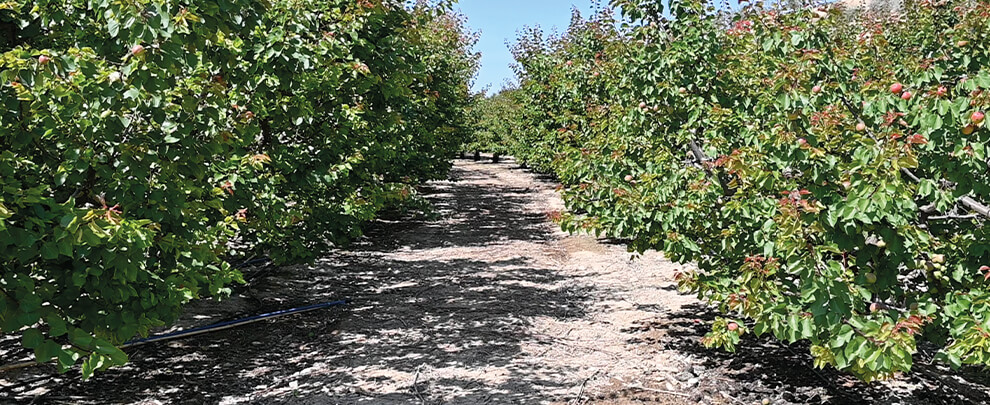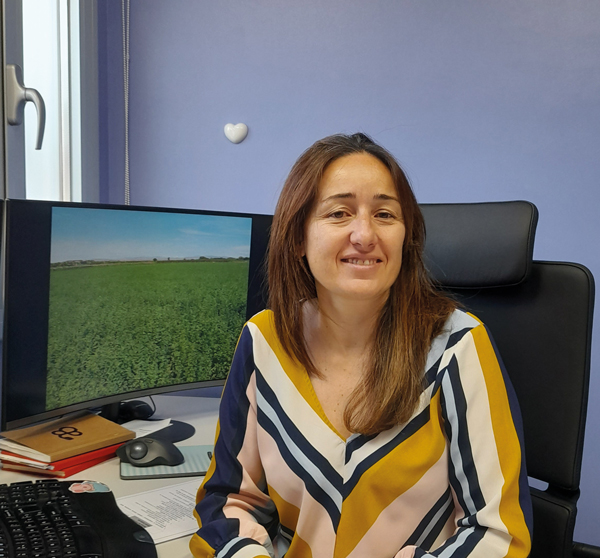Blog
Blog

What changes do the new slurry application regulations entail?
25 of July of 23 - News
On January 1, the new Royal Decree 1051/2022 was implemented, establishing the rules for sustainable nutrition in agricultural soils and consolidating the changes that had already been announced in terms of slurry management. The new regulations seek to reduce gas emissions, especially ammonia, and avoid water and soil pollution. Rosa Gallart, agronomist of the Pig Sanitation Group of Lleida, explains the main points of the new legislation and the repercussions it will have on farmers.

Rosa Gallart, agronomist engineer from the GSP of Lleida. Photo: Rosa Gallart.
What are the main changes foreseen by the new slurry application regulations in Spain?
Being clear-cut, the new regulations focus on the control of fertilisation and sustainable soil nutrition, and the agronomic use of fertilisers. This legislation establishes a general framework for sustainable soil nutrition and adds to the sectoral regulations that would apply when fertilizing crops. Beyond the effect it has on the livestock sector, the main sector affected by this new regulation would be agriculture. For the pork sector, it will have an impact on the use of slurry in the agricultural activity context.
What would these repercussions be?
It will depend a lot on each area, since there are areas where the management of manure in agricultural soil has already been regulated, at a general level, as is the case of Catalonia. In contrast, other communities have only regulated their designated vulnerable areas. The new policies standardise how to manage slurry when we want to take advantage of its agronomical value for agriculture. The effect this by-law has on pig farmers is the following: having established prohibition periods to apply slurry depending on the crop, attention should be paid to how to size their storage capacity based on the crops present or potential in the area. Until now, the regulation of livestock production farms determined that a raft must be available to store the slurry for a minimum of three months outside the warehouses. On the other hand, the policy standardises how slurry should be characterised at the time it is required for agronomic use, taking into account not only the nitrogen content but also the levels of phosphorus in the slurry, which until now had not been considered. This implies broader restrictions on the use of slurry as a fertiliser.
And at the financial level?
It will depend on the different production regions. There are areas with low livestock density where the financial impact will not be very high since in times when mineral fertilizer is very expensive, even pro-mineral fertilization farmers opt for organic fertilizer, that is, apply proximity slurry. On the other hand, in areas with high livestock density, farm owners are forced to look for management alternatives to export nutrients outside their areas and at the same time will have to increase slurry storage capacity. All this supposes a high financial load, a change in management that implies implementing technologies, increasing the devices to store for longer, exporting the parts of the slurry outside their areas, etc. What is clear, is that over the years, slurry management control has meant an increase in the financial cost since it is not only about matching roles, it is about these roles mirroring reality.
One of the requirements of the new regulations is that all farms have a subscriber plan. What are the benefits?
Agronomically, applying a fertilization plan helps the soil to maintain its production status and biodiversity. At times when that soil may have an excess of nutrients, the plan helps to change crops according to needs, to know the state of the soil to know what type of fertilizers should be used, etc. In addition, it helps to improve the environmental conditions of groundwater since it allows reducing any surpluses that could leach through. Therefore, a subscriber plan will always mean an improvement in the mitigation of undesirable effects.
What should this plan include?
The state of the soil, nutrients, organic matter, etc. It should also detail what can be extracted from that soil and should contemplate the crops that will be planted, the precedents (what has been planted or sown and the management of the soil) and a forecast of fertilization based on real needs. With all this data, we have all the information about our soil and we can know what dose of slurry to apply so that we do not have an excess of nutrients that can become a source of pollution. In summary, the plan must pursue the best fertilizer and always respect the principle of a circular economy.
"One of the challenges we must face in terms of MTD implementation is to adapt the technology that exists in other parts of Europe to our territory and production model."
Is there room for improvement in slurry management and application?
I think there is always room for improvement. In the end, sometimes many of the nutrients we provide the soil, by whatever means, are halted or lost due to excess. We, therefore, need to improve the land management system. The speed of improvement will be linked to the control by the appointed organisation that must check that the fertilization of agricultural soils is rational regardless of the type of fertilizer used.
How has the slurry management and application model evolved to meet this new regulation?
Our slurry management and application model has evolved very slowly. At the state level, regulations have been established based on the sanctions and dialogues that came from the European Commission. That is, when Europe has published its directives, they have not been implemented or have been implemented very slowly. As a result, there have been a multitude of regulations to deal with these fines in recent years. When a lot of legislation is published that implies strong changes, but there is no effective control of its compliance, the evolution is slow.
How is it being managed at the European level?
In Europe, they have been more restrictive. The northern countries have more demanding policies and have imposed regulations over which they have maintained greater control a priori. However, the cost of managing slurry in Europe has been higher for some time than the cost assumed by Spain. Despite this, we are witnessing a reduction in the pig tally in some pioneer countries so far. On the other hand, the demanding regulations have led to the development of technologies linked to nutrient extraction, reduction of ammonia emissions in warehouses with the use of ammonium for agricultural benefit, etc.
What MTDs do farmers currently have to reduce the impact of slurry?
In Spain, one of the challenges we must face in terms of MTD implementation is to adapt the technology that exists in other parts of Europe to our territory and production model. Some of the most effective and that we must apply more quickly is to increase the frequency of emptying the slurry inside the warehouses to avoid unwanted degradation and cover the rafts to retain the nutrients. We must also apply techniques such as slurry acidification, which makes reducing ammonia emissions into the atmosphere possible when the slurry is in storage and offers a resulting slurry with more agronomic value because it is acidified.
What challenges do farmers face in terms of slurry management?
At the genetic and nutritional level, we are a very efficient sector, but we must work to reduce the volumes of slurry generated, characterize them better and look for the best techniques to give the farmer the product they need for cultivation without damaging the soil, and try to use our slurry and not another synthetically manufactured fertilizer. This is the biggest challenge, finding synergies between farmers.






